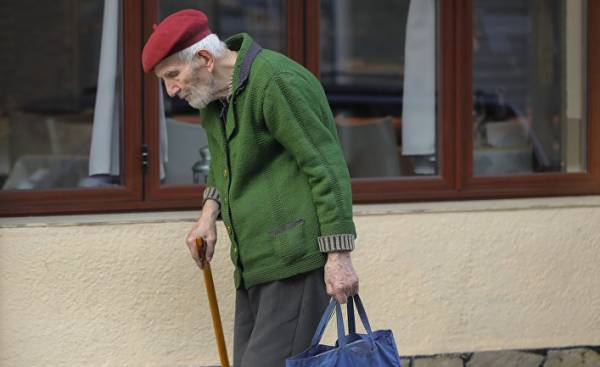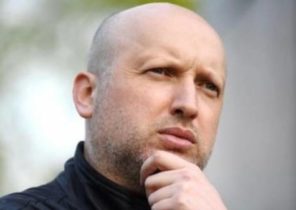
At the end of June the European Commission presented a new model of pan-European pension insurance system. It should help the Europeans to accumulate savings for old age and to adapt the European economy to the inevitable process of aging society. Rакие demographic processes occur in the EU and what they think in Brussels?
When it is impossible to hesitate
“Europe was on the verge of an unprecedented demographic challenge!” — says the official report of the European Commission, explaining the need for pension reforms. If now for every retiree in the EU, there are four people of working age, by 2060, the proportion will change to one to two. The European Commission recognizes that the European welfare system is already struggling to cope with the load and it is necessary to introduce compensatory mechanisms.
Among the options being discussed can be divided into four main areas:
To get to save
Presented by the European Commission project pan-European pension system resembles the well-known Latvians are the third level of the scheme pension insurance clients voluntarily offer to pay their contributions to old age to of the accumulated funds increase to the basic allowance. The main difference is that companies operating in the framework of pan-European insurance, you will be able to offer their services in all EU countries, which will provide more favourable price to the public (due to lower costs), attachment security and a certain standard of quality (to supervise the execution of the service is the European organization for insurance and pension provision), as well as a more convenient opportunity to save for old age, working in different EU countries.
As noted by the European Commission, while the European market for private pension insurance is very fragmented and heterogeneous, and in some countries it is, in fact, simply no. According to the EC, today only 27% of Europeans aged 25 to 59 years signed some of the pension insurance product, and total market volume is estimated at 700 billion euros. The EC expects that the emergence of pan-European insurance by 2030 will increase the turnover twice. If the European Parliament and the EU Council will support the idea, the system in full work for five years. Possible shortcomings of the project in the press release of the European Commission does not say, but it is clear that the implementation of the plan requires the harmonization of national legislations in the sphere of pension insurance, which can be perceived by national governments as an attack on their sovereignty.
Another probable problem is the banal lack of money. According to a survey conducted by Nordea Bank, a third of the population of Latvia has no possibility to make savings, and one in four in our country is not able to cover even their daily expenses.
To get to work
In recent years, almost all European countries began to raise the age of retirement, and the EU has made to European law various prohibitions on discrimination on the criterion of age. From the EU budget is funded by various integration programmes of older persons in the labour market (retraining, computer literacy training, etc.). Another priority area for the EU – the fight against gender inequality. Retiring resident of the country of the European Union receives an average of 40% less than the same pensioner-male. Over the past five years, the difference in half of EU countries has only increased. In Latvia the average pension of men is 18% higher than that of women. The smallest differences in the size of pensions in Estonia (3,7%), the biggest in Cyprus (48.8 per cent). The reason for the emerging differences — the situation in the labour market: women are more likely than men to work part time, receive lower wages and spend more time out of the labour market, because they care about family. According to the EC, the employment rate among women is 64%, among men — 76%. In June this year the European Parliament adopted a resolution which contains a number of proposals for solving the problem: the principle of equal pay for equal work, the introduction of elastic working conditions, and “credits for caring”, which would allow men and women to compensate for career interruptions spent to care for family members, etc.
However, resolution is not binding for national governments, so it is unlikely that the recommendations of the MEPs will be heard throughout the EU. The idea of lifetime employment is also not a panacea. First, not every profession can work up to 80 years. Secondly, remaining long in the ranks, older employees can be deprived of career opportunities to their younger colleagues that distorts competition in the labour market. Thirdly, despite the experience, skills and motivation, age, the staff still works with less performance than the young. An increase of 1 percentage point in the share of workers older than 55 years in the Eurozone leads to a slowdown in productivity growth by 0.75 percentage points, according to data from Morgan Stanley. The Navy estimates show that the ageing of the population each year selects 0.2% of economic growth in Europe (decreasing the level of innovation and rate of technology diffusion). According to economists, the employee’s performance reaches its peak in 40-50 years, and then begins to decline. Over the next 20 years, the share of workers aged 55-64 will increase in Europe by one third — from 15% to 20%, says the IMF.
Get to give birth. Attempts to increase the birth rate in their country is taking almost all EU countries. The most radical path taken in Poland, Ireland, Malta, where the possibility of abortion is restricted legally or in fact prohibited. Liberal ways to motivate procreation — raising allowances, the construction of the necessary social infrastructure (crèches, kindergartens), the creation of flexible conditions for employment of young parents, tax policy support, the promotion of gender equality (parental leave for dads), etc. experts pay attention to an interesting pattern: the higher the level of women’s employment in a particular country, the higher the fertility rate. Thus, in France, which last years is undergoing a baby boom, the employment rate among women aged 24-54 years old is 83,8%, in Finland — 85.6 per cent in Denmark to 87.5%. In turn, the countries of southern Europe, where the birth rate has fallen to critically low levels, women are traditionally less integrated in the labour market (in Italy and 71.6%, Greece — 72.2 per cent). A simple explanation suggests itself: a woman has a regular income, is not afraid to give birth. However, even the French “success story” would have been impossible without immigration.
To deliver
Over the past five years there have been few serious studies proving the relationship between the solution to the problem of aging society and immigration. So, in the recent review of the UN’s population (World Population Prospects, 2017) States that internally displaced persons can help Europe support its ageing society and ease the burden on social and health system — the main stream of refugees arriving in Europe from Africa, which is the youngest continent in the world (percentage of population over 60 years in Africa does not exceed 5%) and very fertile (fertility rate of 4.7 births per woman). The same idea — but with a political purpose — repeatedly voiced by the European functionaries. “Europeans have to understand that we need migrants. It is necessary for our economy due to the aging of the population,” — said in February this year, the high representative of EU foreign policy Federica Mogherini.
However, as economists say, to the arrival of foreigners began to work for the benefit of the European economy, not against it, against migrants need to pursue an effective policy of integration, primarily in the labour market. The level of economic activity among European immigrants is often lower than among those born in Europe. For example, in France 78% of the local working population, whereas among those born outside the EU, this rate is only 68.7 per cent, writes Bloomberg columnist Leonid Bershidsky. The employment rate of immigrants depends on many factors: the complexity of learning the local language to the rigidity of labor laws (in many EU countries, IDPs are not allowed to work until then, until they get official refugee status).
While it is clear that most of those who come to Europe as refugees are likely to engage in unskilled labor. To attract from abroad, competitive specialists, Europe will need to develop a more complex system of motivators. In 2009, the EU entered into force the Directive on the “blue cards”. “Blue card” the EU is a residence permit with the right to work in a particular EU country for highly qualified foreign specialists and their family members. But works Directive has failed, and a number of countries (Denmark, Ireland, UK) do not participate in the program. The new version of the Directive for several months is being discussed in the European Parliament (in particular, it is planned to increase the availability of this program). However, experts have expressed doubts that even the reformed system of “blue cards” will be able to compete in popularity with American “green cards” — too much yet left to the discretion of individual EU countries.
Instead of an epilogue of the Discussion on depopulation and the ageing of society is unpopular politically, the proposed solutions are unlikely to please voters, so politics, national and European level, avoided sensitive topics. Private business is very pragmatic, adapting their products and services to the specifics of an aging clientele. However, completely do without fail — the older the society, the higher the demand for health services and special care, public transport, etc. In conditions of limited resources this means the need of revision of budget priorities (in other words, to build a new school, and a nursing home), than, probably, in the near future will have to engage and Latvia.
Help. Give birth to a little, live a long time
According to Eurostat, thanks to advances in medicine and an overall increase in the level of welfare over the last 50 years, life expectancy in the EU increased for 10 years (for both women and men). A particularly strong jump occurred during the last 20 years. If born in 2002, the Europeans formally had a chance to live to 77.7 years, for babies 2014-year of birth this indicator was calculated as 80.9 per already. In Latvia life expectancy in 2016 for women was 79.4 for men — 69,8 years (for comparison: in 2010 — 77,9 and 67.9). But fertility is not actively progressing. Over the last 50 years the highest activity of fertility on the territory of the European Union was recorded in 1964, when the light appeared, 7.8 million babies. In the XXI century, the natural population growth is kept at around 5-5. 5 million newborns a year.
The average for the EU the total fertility rate, i.e. the average number of births a woman in a hypothetical generation, in 2015 amounted to 1,58 (believed to support natural population it should be at least 2,10). Best business birth rates are in France (1,96), Ireland (1,92) and the UK (1,80), that is, in countries with a high proportion of immigrants and high levels of social support for families, the lowest rates were recorded in Portugal (1,31 birth per woman), Poland and Cyprus (1,32). In Latvia, the average level of fertility, according to Eurostat, equal to 1.70 (in Lithuania — as of 1.70, in Estonia — 1,58). The total result of demographic processes can be seen in the latest estimates of the European Commission every year in the EU age group from 20 to 59 years decreased by one million people, and a category of “60 +” — is growing by 2 million. According to the calculations of the Latvian centre for analytical research CERTUS, in 2030, the median age of the population of Latvia will reach 43 years.
In simple words, every second will be older than 43 years. The life expectancy will continue to increase, which will significantly increase the burden on taxpayers and social infrastructure. In 1990, for every hundred residents of Latvia in working age (15-64) accounted for only 18 pensioners, by 2030 the proportion will change as 100 to 43. I should add that in Strecansky parish now 1,000 inhabitants 759 people unhealthy age, according to the CSB.







